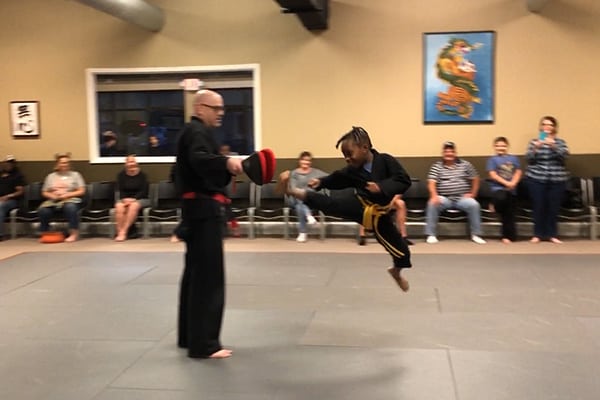In the dynamic and disciplined world of martial arts, safety isn’t just a precaution; it’s a foundational principle that supports every kick, punch, and maneuver. Whether you’re a seasoned martial artist or a beginner eager to embark on this ancient path of physical and mental fortitude, understanding how to minimize risks and protect yourself from injury is the top priority. From the significance of proper technique and the essential role of protective gear to the importance of rest and recovery, we leave no stone unturned. Our goal is to reassure you that martial arts, contrary to popular belief, is not a perilous endeavor but a rewarding journey that enhances one’s physical fitness, mental discipline, self-defense capabilities, and sense of community.
Understanding the Risks
Firstly, it’s essential to recognize that like any physical activity, martial arts come with a risk of injury. However, the perception that martial arts are excessively dangerous is often exaggerated. The risks can be significantly minimized through proper training, equipment, and a safety-first mindset.
Common Injuries in Martial Arts
Injuries in martial arts can range from minor bruises and sprains to more serious injuries like fractures and concussions. Here’s a breakdown of the most common injuries and how they can occur:
- Strains and Sprains: These are perhaps the most common injuries, affecting muscles and ligaments. They often occur from overstretching, improper technique, or sudden movements.
- Bruises: Bruising is another common occurrence, especially in contact martial arts. These are typically superficial and heal with time.
- Fractures: While less common, fractures can occur, especially in the hands and feet, due to improper striking techniques or inadequate protection.
- Concussions: Though rare, concussions can happen, particularly in martial arts that involve sparring or competition. They require immediate attention and proper recovery time.
Prevention Strategies The key to injury prevention lies in a multifaceted approach that includes technique, preparation, and mindfulness. Here’s how we prioritize safety at our academy:
Proper Technique
The foundation of injury prevention is proper technique. Our instructors are not just experts in martial arts; they are trained to teach techniques that minimize risk. By ensuring that students execute movements correctly, we significantly reduce the chances of injury.
- Warm-Up and Cool-Down: Every session begins with a thorough warm-up and ends with a cool-down period. This practice increases flexibility and blood flow, reducing the risk of muscle strains and sprains.
- Gradual Progression: We believe in building skills gradually. This approach allows the body to adapt to new demands, reducing the risk of overuse injuries.
- Protective Gear: Using appropriate protective gear, such as mouthguards, headgear, and padding, is crucial. This equipment is designed to absorb impact and protect vulnerable areas.
Education and Awareness
Understanding the risks and knowing how to prevent injuries is half the battle. Our instructors provide continuous education on injury prevention, including:
- Technique Workshops: Regular workshops focus on refining techniques to prevent common mistakes that could lead to injury.
- Injury Prevention Seminars: We host seminars that educate students on the importance of strength training, flexibility, and proper rest in preventing injuries.
Encouraging Open Communication
A supportive environment where students feel comfortable discussing discomfort or potential injuries with instructors is vital. Early detection of potential issues allows for adjustments in training to prevent more serious injuries.
Rest and Recovery
Rest is as important as training. Overtraining can lead to burnout and increases the risk of injury. We encourage students to listen to their bodies and take necessary rest days, ensuring full recovery between sessions.
Reassurance: Martial Arts is Not Dangerous
It’s important to reiterate that martial arts, when practiced with the right precautions, is not a dangerous activity. The benefits of martial arts—physical fitness, mental discipline, self-defense skills, and a sense of community—far outweigh the risks. At the Innovative Martial Arts Academy, we are committed to providing a safe, supportive environment where students of all ages can learn and grow.
Our approach to training emphasizes respect—for discipline, for our fellow martial artists, and for our own bodies. This respect is the cornerstone of our safety-first philosophy. By fostering an environment where safety is paramount, we ensure that our students can focus on their growth and enjoyment in martial arts without undue concern for injury.
Stronger with Martial IMAA
Injury prevention in martial arts is an ongoing process that involves the collective effort of students, instructors, and the broader martial arts community. At the Innovative Martial Arts Academy, we are dedicated to providing the highest level of instruction and support to ensure a safe, enjoyable experience for all our students. Remember, martial arts is a journey—one that should be approached with care, respect, and a safety-first mindset. Join us, and let’s embark on this journey together, with confidence and peace of mind.
Enroll Now!
At Innovative Martial Arts Academy, our Martial Arts training offers men, women, and children the opportunity to challenge their bodies and minds without the threat of injury and intimidation. Take on the best training in disciplines like Aikido, Kenpo Karate, and Kali, and build your skills one day at a time with the help of our dedicated instructors. Children ages 5-7 are encouraged to join our Young Dragons, and ages 3-5 are welcome in our Lil Ninjas program.
We are proud to serve families across Wake Forest, Wakefield and the surrounding area with a rewarding experience that can set you or your child up for success in all aspects of life. If you’re interested in learning about our martial arts program, contact us at 919.562.4663, or visit our website.
*Follow us on Instagram | Facebook
Want To Read More About Martial Arts?
Take a look at some of our other articles about martial arts and IMAA’s course offerings? Check out the following related blog articles:


